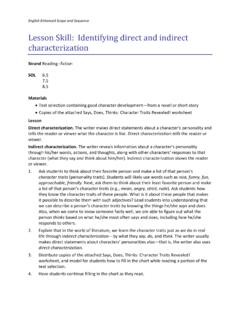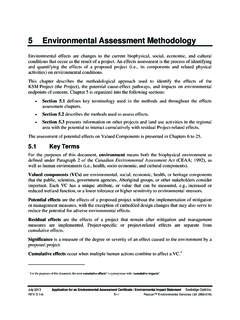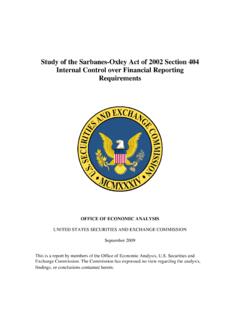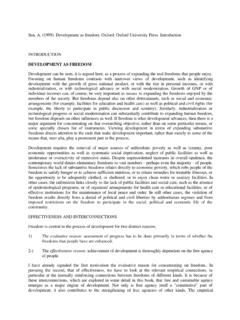Transcription of INTERNATIONAL ISO STANDARD 10993-1
1 Reference numberISO 10993-1 :2009(E) ISO 2009 INTERNATIONAL STANDARD ISO10993-1 Fourth edition2009-10-15 Biological evaluation of medical devices Part 1: Evaluation and testing within a risk management process valuation biologique des dispositifs m dicaux Partie 1: valuation et essais au sein d'un processus de gestion du risque ISO 10993-1 :2009(E) PDF disclaimer This PDF file may contain embedded typefaces. In accordance with Adobe's licensing policy, this file may be printed or viewed but shall not be edited unless the typefaces which are embedded are licensed to and installed on the computer performing the editing. In downloading this file, parties accept therein the responsibility of not infringing Adobe's licensing policy.
2 The ISO Central Secretariat accepts no liability in this area. Adobe is a trademark of Adobe Systems Incorporated. Details of the software products used to create this PDF file can be found in the General Info relative to the file; the PDF-creation parameters were optimized for printing. Every care has been taken to ensure that the file is suitable for use by ISO member bodies. In the unlikely event that a problem relating to it is found, please inform the Central Secretariat at the address given below. COPYRIGHT PROTECTED DOCUMENT ISO 2009 All rights reserved. Unless otherwise specified, no part of this publication may be reproduced or utilized in any form or by any means, electronic or mechanical, including photocopying and microfilm, without permission in writing from either ISO at the address below or ISO's member body in the country of the requester.
3 ISO copyright office Case postale 56 CH-1211 Geneva 20 Tel. + 41 22 749 01 11 Fax + 41 22 749 09 47 E-mail Web Published in Switzerland ii ISO 2009 All rights reserved ISO 10993-1 :2009(E) ISO 2009 All rights reserved iii Contents Page Foreword ..iv 1 Scope .. 1 2 Normative 1 3 Terms and definitions .. 2 4 General principles applying to biological evaluation of medical devices .. 3 5 Categorization of medical devices .. 6 General .. 6 Categorization by nature of body contact .. 6 Categorization by duration of 7 6 Biological evaluation 8 Material characterization .. 8 Biological evaluation tests .. 8 7 Interpretation of biological evaluation data and overall biological safety assessment .. 14 Annex A (informative) Biological evaluation tests.
4 15 Annex B (informative) Guidance on the risk management process .. 16 Annex C (informative) Suggested procedure for literature review .. 19 21 ISO 10993-1 :2009(E) iv ISO 2009 All rights reserved Foreword ISO (the INTERNATIONAL Organization for Standardization) is a worldwide federation of national standards bodies (ISO member bodies). The work of preparing INTERNATIONAL Standards is normally carried out through ISO technical committees. Each member body interested in a subject for which a technical committee has been established has the right to be represented on that committee. INTERNATIONAL organizations, governmental and non-governmental, in liaison with ISO, also take part in the work. ISO collaborates closely with the INTERNATIONAL Electrotechnical Commission (IEC) on all matters of electrotechnical standardization.
5 INTERNATIONAL Standards are drafted in accordance with the rules given in the ISO/IEC Directives, Part 2. The main task of technical committees is to prepare INTERNATIONAL Standards. Draft INTERNATIONAL Standards adopted by the technical committees are circulated to the member bodies for voting. Publication as an INTERNATIONAL STANDARD requires approval by at least 75 % of the member bodies casting a vote. Attention is drawn to the possibility that some of the elements of this document may be the subject of patent rights. ISO shall not be held responsible for identifying any or all such patent rights. ISO 10993-1 was prepared by Technical Committee ISO/TC 194, Biological evaluation of medical devices. This fourth edition cancels and replaces the third edition (ISO 10993-1 :2003), which has been technically revised.
6 ISO 10993 consists of the following parts, under the general title Biological evaluation of medical devices: Part 1: Evaluation and testing within a risk management process Part 2: Animal welfare requirements Part 3: Tests for genotoxicity, carcinogenicity and reproductive toxicity Part 4: Selection of tests for interactions with blood Part 5: Tests for in vitro cytotoxicity Part 6: Tests for local effects after implantation Part 7: Ethylene oxide sterilization residuals Part 9: Framework for identification and quantification of potential degradation products Part 10: Tests for irritation and skin sensitization Part 11: Tests for systemic toxicity Part 12: Sample preparation and reference materials Part 13: Identification and quantification of degradation products from polymeric medical devices Part 14: Identification and quantification of degradation products from ceramics Part 15: Identification and quantification of degradation products from metals and alloys ISO 10993-1 :2009(E) ISO 2009 All rights reserved v Part 16: Toxicokinetic study design for degradation products and leachables Part 17: Establishment of allowable limits for leachable substances Part 18: Chemical characterization of materials Part 19: Physico-chemical, morphological and topographical characterization of materials (Technical Specification) Part 20.
7 Principles and methods for immunotoxicology testing of medical devices (Technical Specification) Future parts will deal with other relevant aspects of biological evaluation. ISO 10993-1 :2009(E) vi ISO 2009 All rights reserved Introduction The primary aim of this part of ISO 10993 is the protection of humans from potential biological risks arising from the use of medical devices. It is compiled from numerous INTERNATIONAL and National Standards and Guidelines concerning the biological evaluation of medical devices. It is intended to be a guidance document for the biological evaluation of medical devices within a risk management process, as part of the overall evaluation and development of each device.
8 This approach combines the review and evaluation of existing data from all sources with, where necessary, the selection and application of additional tests, thus enabling a full evaluation to be made of the biological responses to each medical device, relevant to its safety in use. It must be appreciated that the term medical device is wide-ranging and, at one extreme, consists of a single material, which may exist in more than one physical form, and at the other extreme, of a complex instrument or piece of apparatus, consisting of numerous components made of more than one material. ISO 10993 addresses the determination of the effects of medical devices on tissues, mostly in a general way, rather than in a specific device-type situation.
9 Thus, for a complete biological safety evaluation, it classifies medical devices according to the nature and duration of their anticipated contact with human tissues when in use and indicates, in matrices, the biological data sets that are thought to be relevant in the consideration of each device category. The range of biological hazards is wide and complex. The tissue interaction with a constituent material alone cannot be considered in isolation from the overall device design. Thus, in designing a device, the choice of the best material with respect to its tissue interaction might result in a less functional device, tissue interaction being only one of a number of characteristics to be considered in making that choice.
10 Where a material is intended to interact with tissue in order to perform its function, the biological evaluation needs to address this. Tissue interactions that are regarded as adverse, caused by a material in one application, might not be regarded as such in a different situation. Biological testing is based upon, among other things, in vitro and ex vivo test methods and upon animal models, so that the anticipated behaviour when a device is used in humans can be adjudged only with caution, as it cannot be unequivocally concluded that the same tissue reactions will also occur in this species. In addition, differences in the manner of response to the same material among individuals indicate that some patients can have adverse reactions, even to well-established materials.







